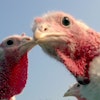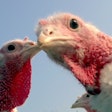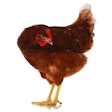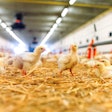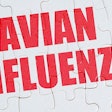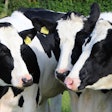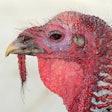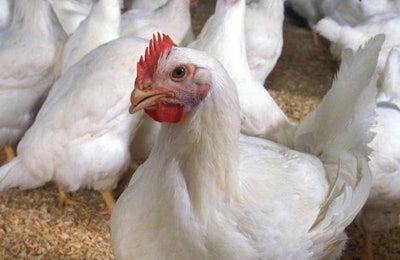
There are 14 biosecurity principles and management practices that will prevent the introduction and spread of infectious diseases on poultry farms.
Dr. Elena Behnke, veterinary coordinator for the National Poultry Improvement Plan at the U.S. Department of Agriculture Animal and Plant Health Inspection Service (USDA-APHIS), highlighted these principles at the Egg Industry Center Issues Forum, held recently in Columbus, Ohio.
The 14 biosecurity principles are:
1. Biosecurity responsibility
A farm’s biosecurity coordinator should develop, implement, maintain and monitor the ongoing effectiveness of the farm’s biosecurity program. A biosecurity program should be reviewed at least during each calendar year and revised as necessary.
2. Training
A farm’s biosecurity program should include training materials that cover farm site-specific procedures and premises-wide or companywide procedures. Poultry owners and caregivers should complete the training, and it should be done once per calendar year and documented. New employees should be trained at the time of hiring.
3. Line of separation
The line of separation is a functional line that separates the poultry house and the birds inside from exposure to disease. It is defined as the walls of the poultry building with practical deviations to account for entry points, structural aspects or outside access areas.
4. Perimeter buffer area
The perimeter buffer area is the area surrounding the poultry house or area where poultry is raised, separating the birds from areas unrelated to poultry production and/or adjoining properties. It includes the poultry houses and poultry-raising areas, nearby structures and high-traffic areas involved in the daily function of the farm, such as feed bins, manure sheds, composting areas, egg rooms, generators and pump rooms.
5. Personnel
A biosecurity program should include provisions that address procedures and biosecurity personal protection equipment for employees and non-farm personnel.
6. Wild birds, rodents and insects
Farms should have in place control measures that prevent contact with and protect poultry from wild birds, their feces and their feathers, as well as rodents, insects and other animals. These measures should be reviewed during periods of heightened risk of disease transmission.
7. Equipment and vehicles
A farm’s biosecurity plan should include procedures for cleaning, disinfection or restriction of sharing equipment. Vehicle access and traffic patterns should be defined in the biosecurity plan.
8. Mortality disposal
Dead poultry should be collected daily, stored and disposed of in a manner that does not attract wild birds, rodents, insects and other animals and minimizes the potential for cross contamination from other facilities. Dead bird disposal is recommended to be on-site, if possible.
9. Manure and litter management
Manure and spent litter should be removed, stored and disposed of in a manner that prevents exposure of susceptible poultry to disease. On-site litter and manure storage should limit the attraction of wild birds, rodents, insects and other animals.
10. Replacement poultry
Replacement poultry should come from health-monitored flocks and should be transported in equipment and vehicles that are regularly cleaned, disinfected and inspected.
11. Water supplies
Drinking water and water used for evaporative cooling should be sourced from a contained supply such as a well or municipal system. If drinking water comes from a surface water source, water treatment must be used to reduce the level of disease agents. If surfaces have been cleaned or flushed with surface water, subsequent disinfection should be employed to prevent disease transmission. If water treatment is not possible, a risk analysis should be performed to determine actions needed to mitigate risks.
12. Feed and replacement litter
Feed, feed ingredients, bedding and litter should be delivered, stored and maintained in a manner that limits exposure to and contamination by wild birds, rodents, insects and other animals. Feed spills should be cleaned up and disposed of in a timely fashion.
13. Reporting of elevated morbidity and mortality
Elevation in morbidity and/or mortality above expected levels should be reported as required in the farm’s biosecurity plan and appropriate actions should be taken to rule out reportable disease agents.
14. Auditing
Biosecurity audits should be conducted at least once every two years by an Official State Agency.

